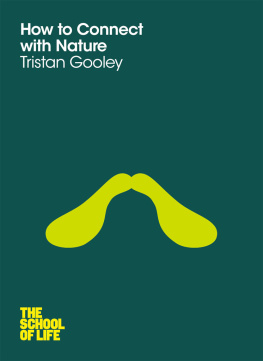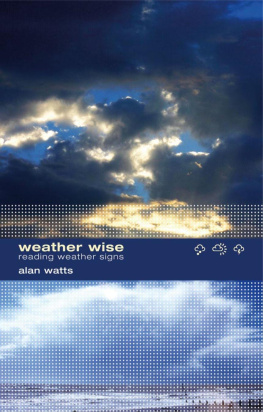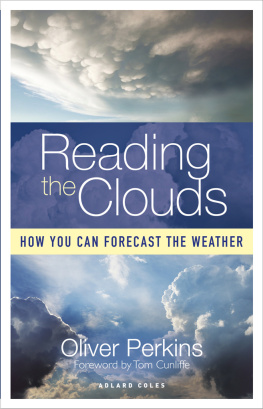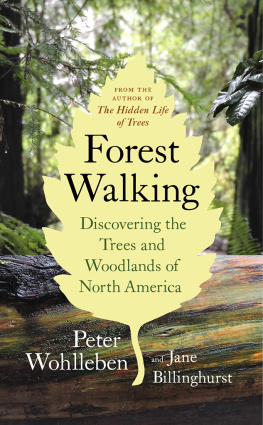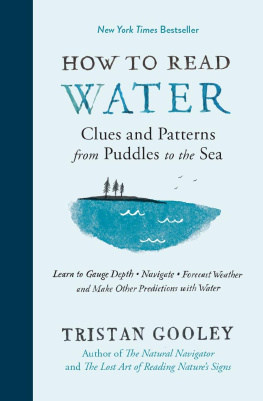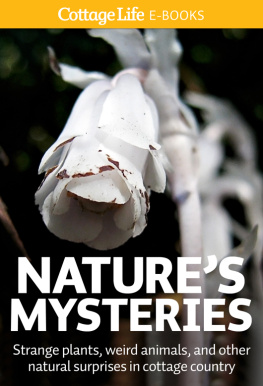ALSO BY TRISTAN GOOLEY
The Natural Navigator
The Natural Explorer
How to Connect with Nature
THE LOST ART OF READING NATURES SIGNS: Use Outdoor Clues to Find Your Way, Predict the Weather, Locate Water, Track Animalsand Other Forgotten Skills
Copyright Tristan Gooley, 2014
; All other illustrations Neil Gower
First published in the UK as The Walkers Guide to Outdoor Clues and Signs by Sceptre, 2014
All rights reserved. Except for brief passages quoted in newspaper, magazine, radio, television, or online reviews, no portion of this book may be reproduced, distributed, or transmitted in any form or by any means, electronic or mechanical, including photocopying, recording, or information storage or retrieval system, without the prior written permission of the publisher.
Many of the designations used by manufacturers and sellers to distinguish their products are claimed as trademarks. Where those designations appear in this book and The Experiment was aware of a trademark claim, the designations have been capitalized.
The Experiment, LLC
220 East 23rd Street, Suite 301
New York, NY 10010-4674
www.theexperimentpublishing.com
The Experiments books are available at special discounts when purchased in bulk for premiums and sales promotions as well as for fund-raising or educational use. For details, contact us at .
Excerpt from What the Robin Knows: How Birds Reveal the Secrets of the Natural World by Jon Young. Copright 2012 by Jon Young. Reprinted by permission of Houghton Mifflin Harcourt Publishing Company. All rights reserved.
Library of Congress Cataloging-in-Publication Data
Gooley, Tristan.
The lost art of reading natures signs : use outdoor clues to find your way, predict the weather, locate water, track animals--and other forgotten skills / Tristan Gooley ; illustrations by Neil Gower.
pages cm
First published in Great Britain in 2014 as The Walkers Guide to Outdoor Clues and Signs: Their Meaning and the Art of Making Predictions and Deductions by Sceptre.
Includes bibliographical references and index.
ISBN 978-1-61519-241-0 (pbk.) -- ISBN 978-1-61519-242-7 (ebook) 1. Outdoor life--Handbooks, manuals, etc. 2. Orienteering--Handbooks, manuals, etc. I. Title.
GV200.4.G648 2015
796.5--dc23
2014041221
ISBN 978-1-61519-241-0
Ebook ISBN 978-1-61519-242-7
Cover design by Sarah Smith
Manufactured in the United States of America
Distributed by Workman Publishing Company, Inc.
Distributed simultaneously in Canada by Thomas Allen & Son Ltd.
CONTENTS
A NOTE TO READERS
I HAVE SPENT MORE THAN TWO DECADES walking the woods and towns and countryside and coast near my home and throughout the rest of England, where Im from. On my journeys Ive collected notes on hundreds of natures signs hidden in plain sightthe sun, moon, stars, sky, plants and animals that, upon closer inspection, often reveal clues to a deeper understanding of the environment.
A good deal of the things Ive seen can be found in many places in the US, but, inevitably, Ill refer to some plants and animals that the reader may not be familiar with. Where possible, Ive enlisted the help of Marc Williams, an ethnobotanist from North Carolina and someone who, like me, spends much of his time carefully observing nature, to incorporate signs and species that American readers may find in their own backyards.
I should also mention here that some of my very favorite outdoor clues are the ones Ive learned far from home. Ive traveled to places as remote as Borneo and the Sahara, where Ive walked among the Dayak and Tuareg to learn their ancient customs for reading the land. I come away with a better understanding of concepts and principles that will change the way I look at the land back home, and with a deeper sense of how the world around us offers up her secrets to those who take the time to look, in ways Id never imagined.
Lastly, a note on species identification: to get the most out of this book, I recommend readers carry one or more field guides as they venture outdoors, as I do on most of my walks. The Internet is proving a wonderful resource in helping with identification too. There are countless specialist websites that will help you as you build your collection of clues, and I am always adding new images and material to my own website, naturalnavigator.com.
INTRODUCTION
T EN YEARS AGO I WAS WALKING along a beach in Brittany, relaxing after a tiring journey. A young couple emerged from what appeared to be an upmarket hotel and crossed in front of me. From their choice of swimwear, their hairstyles and their body language, they gave the impression of being Continental Europeans. The few words of conversation I overheard confirmed them as Italians.
The couple paused as the first wave washed over their feet and then they did what a lot of people do at this point: they subconsciously checked their valuable items of jewelry. Both their right hands moved to the fingers on their left hands and it was this that drew my attention to the wedding rings. It did not take a huge leap from there, given their age and the luxuriousness of the hotel, to surmise that they were probably on their honeymoon.
I had built a limited picture of this couple in less than ten seconds, using very basic techniques of deduction that are fairly familiar thanks to the countless detective stories that rely on this type of observation and logical thought. These simple thought processes have earned the nickname Holmesian, after the fictional detective who exemplified the art of analyzing strangers in this way.
Toward the end of the day, I saw the same couple again. They had started building a fire on the beach. Using the clues I could see on the beach, including the birds, the lichens on the rocks, the insects, the clouds, the sun and the moon, I worked out that the sun would set in forty minutes, the sky would cloud over shortly after that, rain would follow soon after and the tide would extinguish their small bonfire half an hour after sunset.
If the couple had plans of a night of stargazing by the fire, then the sea and sky had other plans. Theyd be forced to retire early, which in the circumstances would probably be no great tragedy. A pair of astronomers may have been disappointed by the passage of events that night, but a pair of honeymooners might well be delighted.
I walked off the beach, so I cannot tell you exactly what happened on the sand that night. There are limits to our powers of deduction, but they lie far beyond the place most of us imagine. In truth, we rarely focus our powers of deduction and prediction on the natural world. But that is about to change.
In my mid-twenties I had some time between jobs and an appetite for a serious walk. I met up with a friend, Sam, who felt a similar restlessness. During the second minute of our discussion, we decided that a walk from Scotland to London sounded about right, and by the third we had settled on walking from Glasgow to London. We averaged over twenty miles a day and arrived in London five weeks after setting off, having seen a good slice of Britain and no shortage of ugliness and beauty.
I remember one day of that walk very fondly indeed. We were into the third week of our journey, and had just begun walking up a hill in the Peak District, in Northern England, when a pair of dark silhouettes appeared on the horizon. A few minutes later we could see that they were serious walkers. Or perhaps it would be more accurate to say that we could see that they were walkers with serious budgets. They had pieces of kit that I could neither afford nor spell, draped all over them and hanging down toward their gleaming gaiters. Their walking poles looked like they cost more than our rucksacks and their contents combined. The two premium walkers paused opposite, looked down their noses at us in our T-shirts, shorts and 19 trainers and said, You dont want to go up there dressed like that!
Next page

